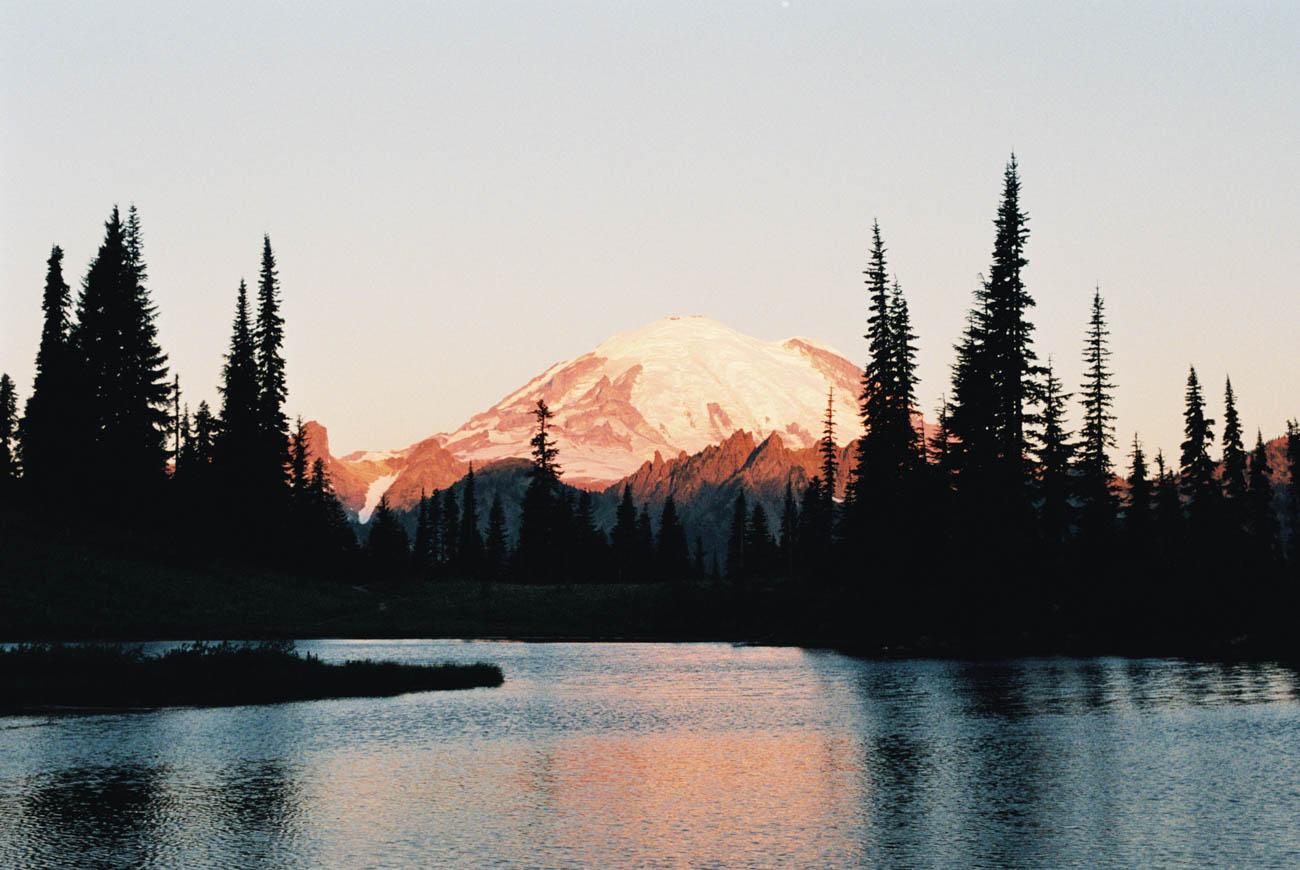What do I think of Kodak Gold 200?
In short, I think it’s one of the best film stocks available especially if you’re just starting! It’s reasonably priced, produces classic vintage colors, and is pretty flexible to use.
For this Kodak Gold 200 review, I wanted to do something special since it’s one of my favorite film stocks. So, I picked up a couple of rolls of Kodak Gold 200 and my Nikon F3 and headed to Mount Rainier National Park.
This article is geared towards the beginner just starting, but if you’re a seasoned film pro I think you’ll find some useful information in here too.
Why It’s One of My Favorite Film Stocks

The main reasons why I always have at least 1 or 2 rolls of Kodak Gold 200 in my bag is because it’s relatively cheap, consistently delivers great colors, and it’s flexible enough in most situations.
Yes, if I didn’t have to worry about staying within a budget, I would always go with Kodak Portra 400 because of its incredible colors and its crazy flexible exposure latitude. However, I like to save money where I can with film photography.
One of the best things about film photography is how many different film stocks there are to choose from. It’s awesome for experimentation, but eventually, you’ll want a film stock that you can rely on in every situation; even those casual ones.
This is especially true because of how quickly the costs of buying and developing film add up.
If you’re looking for a consistently great vintage film stock at an affordable price to use in most situations, Kodak Gold 200 is one to check out.
Pros
- Very affordable and widely available.
- A classic vintage color rendition that’s perfect for sunny days.
- Has good exposure latitude meaning it deals well with underexposure and overexposure.
Cons
- It’s a 200-speed film so it’s not as flexible to use as a 400-speed film like Kodak Ultramax 400.
- The slower speed of the film isn’t as easy to use in low light or on cloudy days.
- The warm color tones of the film stock might not fit with everyone’s style
Kodak Gold 200 Features
Colors

This film stock features the classic rich, warm, saturated vintage colors that Kodak is known for and will remind you of flipping through your family’s old picture albums. It performs the best in bright light and will amplify the warm tones in the entire image.
What’s surprising about the film stock is that it produces pretty good skin tones even though it’s more saturated and warm in color.
This photo of melissa is a great example of how the film stock performs in good sunlight with a decent amount of contrast between the highlights and shadows in the image.
As you can see, there is a warm, subtle, saturated undertone throughout the entire image in both the shadows and the highlights. The film stock does a great job of accentuating all the areas where the sunlight hits and does a great job with Melissa’s skin tone.
I was also impressed with how the film performed with the shadow details.
The one thing to watch out for is that this is a daylight-balanced film. This means that if you’re using the film under artificial lighting, you might need to color correct using photo editing software to adjust the white balance.
Film Speed
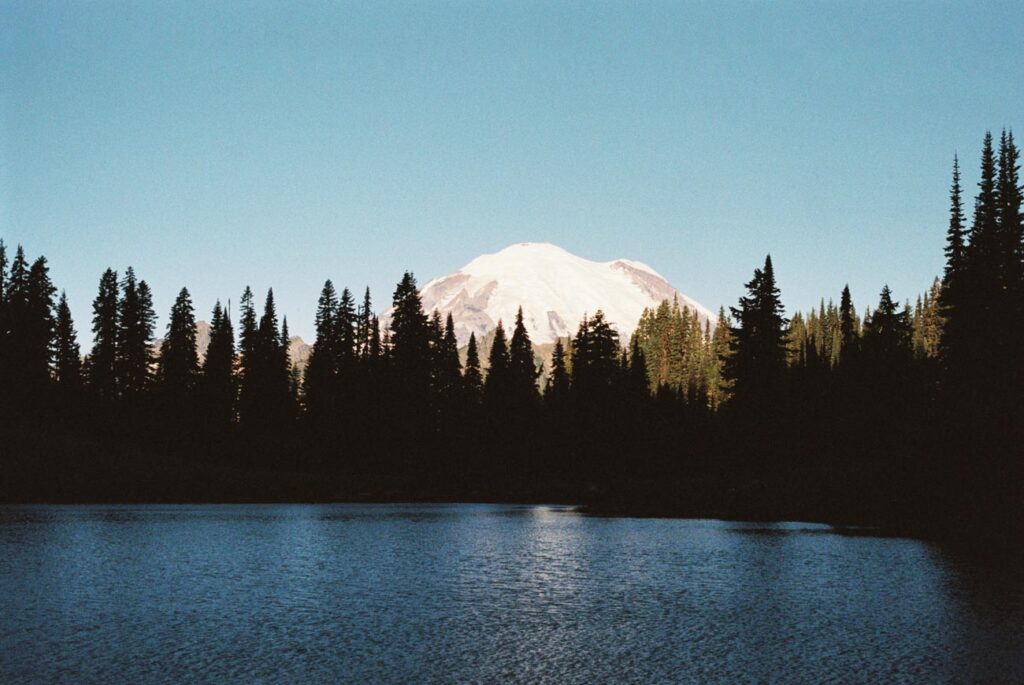
This is probably the film stock’s biggest weakness. It’s a 200-speed film so it’s on the slower end of the film stock speed spectrum.
At ISO 200 speed, it’ll be easiest to use this film on bright sunny days. It’s still usable on cloudy days too, but you’ll probably have to use wider apertures and slower shutter speeds.
Indoor photography is doable too, but for the best performance, you’ll need lots of natural light flowing in from the windows. If you don’t have natural light, it’ll be hard for the film stock to pick up details in the shadows.
Latitude of Film Stock
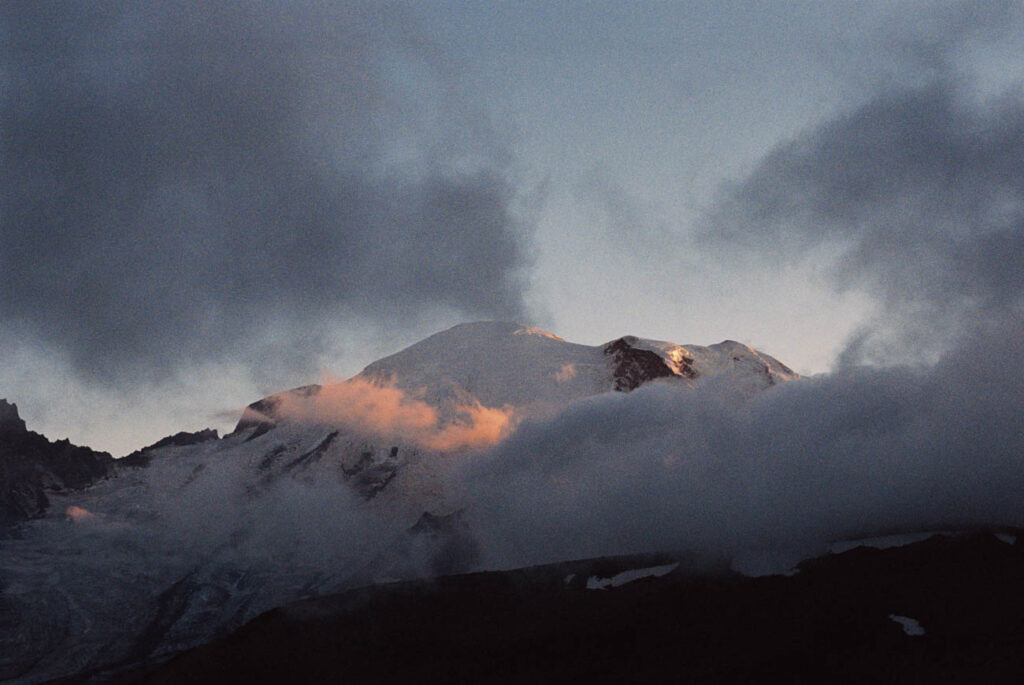
Kodak Gold 200 has a pretty wide latitude which is a nice plus considering it’s a consumer-level budget film stock. This means that you’ll still be able to create a nice image even if you under or overexpose the image.
Just keep in mind that similar to other Kodak film stocks, Kodak Gold 200 performs better when it’s overexposed versus underexposed. For example, the highlights in this image were overexposed by at least 1 stop and the film stock easily handled it.
The best way to make sure you’re not underexposing your image too much is to expose for the shadows in the image. Unless you have to, try to keep the shadow exposure to a maximum of 1 stop underexposed.
The downside with Kodak Gold 200 is that it doesn’t have as much exposure latitude as the popular 400-speed film stocks from Kodak like Kodak Portra 400 and Kodak Ultramax 400
Beginner’s Note: What “latitude” means is how well the film stock performs when it’s under or overexposed. For example, if a film stock has high latitude it means the film stock performs well throughout a wide range from underexposure to overexposure. On the other hand, if a film stock has low latitude, it means the film stock only performs well in a narrow exposure window.
Grain

Since Kodak Gold 200 is a slower film, it also has a finer grain. This means your images will have a sharper, more detailed look. You’ll also able to print out large size prints without worrying about seeing too much grain.
The downside is that since it’s a slower film, it’s not as sensitive to light so it won’t perform as well in low light conditions.
Beginner’s Note: This is one of the trade-offs between low speed (low ISO) and higher speed film stocks (higher ISO) film stocks. In general, the lower the ISO, the finer the grain. The higher the ISO, the courser/larger the grain. With that said, courser/larger grain isn’t a negative, it’s just a different look and will give you better low light performance.
How to Meter for Kodak Gold 200

TL;DR – Meter at box speed 200 or 1 stop overexposed at ISO (ASA) 100.
Kodak Gold 200 has pretty good exposure latitude and performs best slightly overexposed. After shooting through and developing a few rolls, I’ve found it best to meter at the box speed of ISO (ASA) 200 or 1 stop overexposed at ISO (ASA) 100.
Since the film stock likes to be bathed in light and performs better overexposed versus underexposed, I always meter for the shadows and mid-tones in the image.
This way, I can make sure the shadows in the image are properly exposed while remaining confident it will be able to handle the over-exposure in the highlights.
Beginner’s Note: If you don’t have a light meter, one quick way to meter for light is to use a phone light meter app like this one. It’s not as accurate as a Sekonic light meter, but I’ve used it with good results.
Alternative Film Stocks to Consider
Kodak ColorPlus 200

If you like the look of Kodak Gold 200 but want something with a flatter, less saturated look, Kodak ColorPlus might be a good choice. Similar to Kodak Gold, Kodak ColorPlus is also a budget-friendly film stock with a flexible exposure latitude that’s always great to have in your bag.
It’s also a 200-speed film, so it works best with a lot of light.
- ISO (ASA): 200
- Best Shot At: Its best shot slightly overexposed. Try metering it at 100 ISO.
Kodak Portra 400
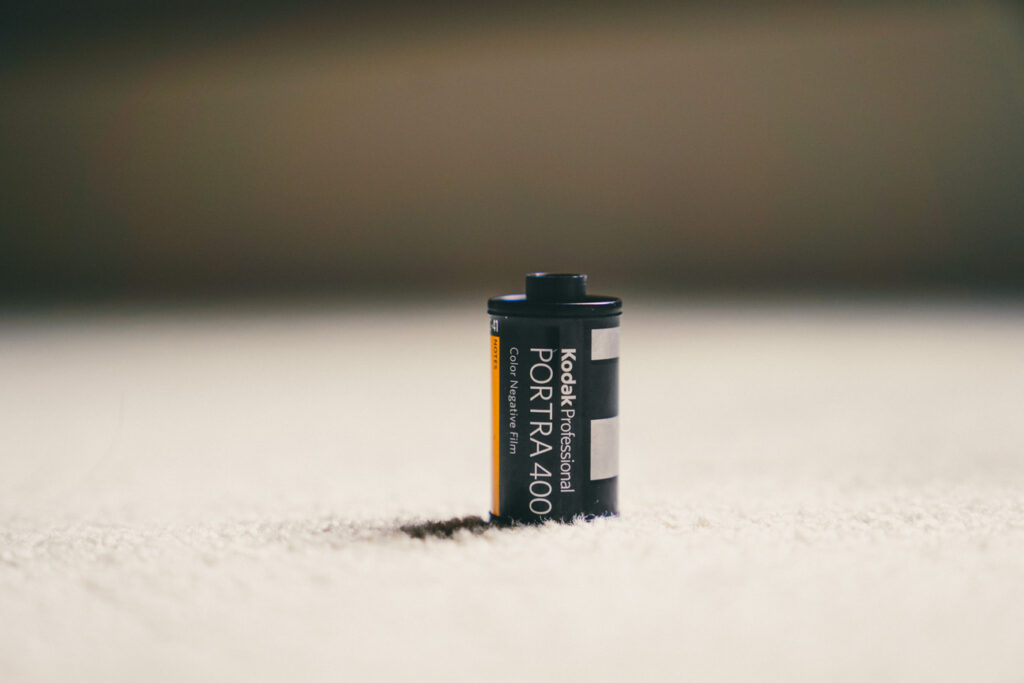
Kodak Portra 400 is my all-time favorite film stock and there is a good reason why it’s so popular.
The film stock produces crazy beautiful colors, accurate skin tones (which is why people use it for portrait work so much), and keeps an insane amount of detail in the image. It has one of the best ranges in exposure latitude and since it’s a 400-speed film, you have more flexibility in low-light situations.
The downside is that Kodak Portra 400 is a premium film stock so it’s more expensive than Kodak Gold 200 or Kodak ColorPlus 200
- ISO (ASA): 400
- Best Shot At: Best shot overexposed by 1 stop. Try metering it at 200 ISO (ASA) although it works great at the box speed of 400 ISO (ASA) too.
Where to Develop Your Film
For newbies, having a professional lab develop and scan your photos is the best way to start out. You’ll save time, get consistent results, and you’ll get to figure out if you want to continue with film photography before investing in film development equipment.
Obviously, the downside is that it’s much more expensive to have a professional lab develop and scan your photos in the long run.
In general, the price for developing and scanning a roll of film is usually around $15 – $20 per roll. You might find cheaper or higher prices, but I’ve found this range to be pretty standard.
If you don’t have a professional camera lab to work through in your area, here are a few of my favorites that take mail-in orders:
- The Shot on Film Store in Seattle: $16.97 for developing and scanning.
- The Dark Room in San Clemente, CA: $15 for developing and scanning.
- Blue Moon Camera in Portland: $22 for developing and scanning.
Where to Buy Film
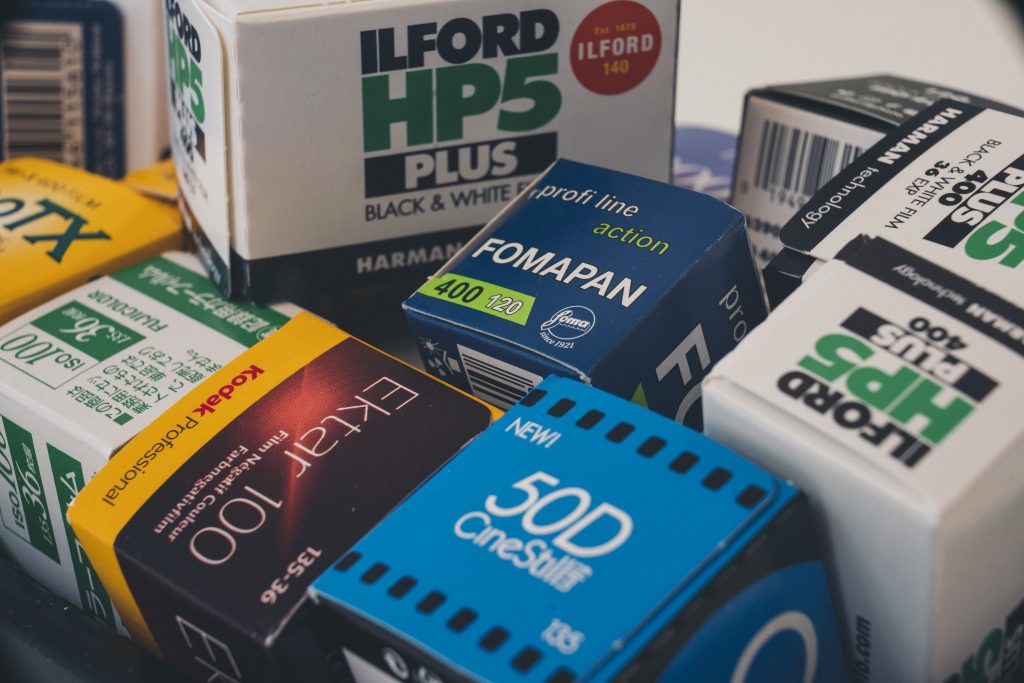
The cost for film has been slowly increasing since I first started, but here are my favorite places to find a good deal on film stock.
- Amazon: Surprisingly, Amazon is quickly becoming one of the best places to buy film when you take into consideration shipping fees and customer service especially if you’re an Amazon Prime member.
- Freestyle Photographic Supply: A huge supply of different film stocks at a great price. Unfortunately, they don’t have a free shipping option.
- Adorama: Free shipping options are available. Another good choice for a wide selection of film stock at a fair price.
- B&H Photo: Another place to find a wide selection of film stock at reasonable prices. They also have free 1-2 day shipping if your order is over $49.
- The Shot on Film Store: An awesome film store in the Seattle area that offers free shipping on orders over $49. They carry a large selection, however, prices have recently increased a little.
- eBay: eBay is a great place to look if you want to buy expired film stock to try. Just make sure that you buy from a reputable seller.
If you have any questions about particular film stocks and want to speak to someone, give The Shot on Film Store a call. They are my favorite local lab where I live and are always very helpful when I have questions.
Who’s Kodak Gold 200 For and Conclusion
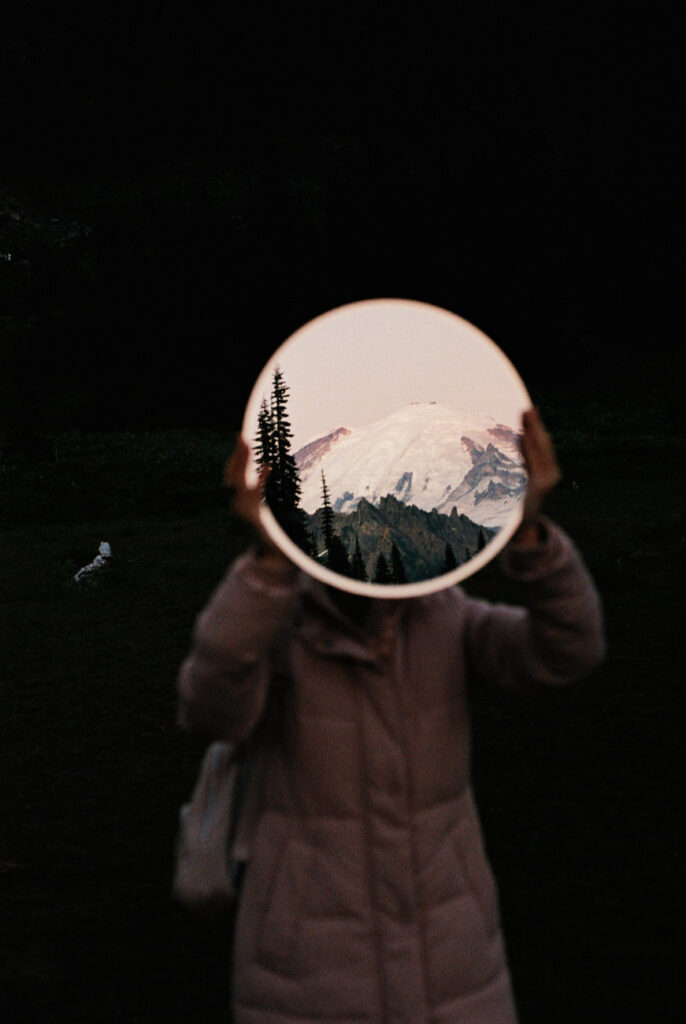
Overall, Kodak Gold 200 is a great budget film stock with a wide exposure latitude that has a place in everyone’s bag. It features awesome vintage colors, is fun to shoot with, and is perfect for those bright sunny days throughout the year.
I think Kodak Gold 200 is one of the best choices for a beginner film photographer, landscape photographer, or for those who want a film stock for more casual occasions.
However, if you’re a professional photographer or are looking to do more serious portrait work, I think it’s worth it to spend the extra money on Kodak Portra 400.

